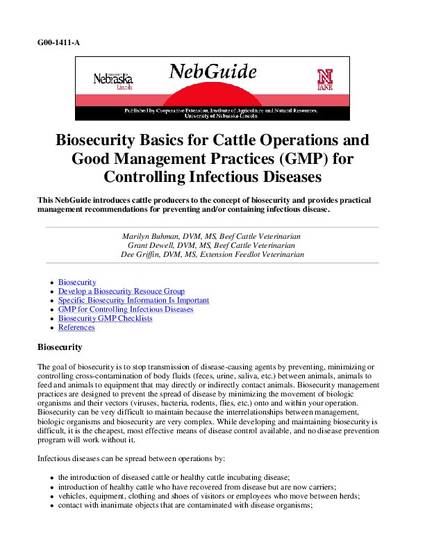
This NebGuide introduces cattle producers to the concept of biosecurity and provides practical management recommendations for preventing and/or containing infectious disease.
Biosecurity
The goal of biosecurity is to stop transmission of disease-causing agents by preventing, minimizing or controlling cross-contamination of body fluids (feces, urine, saliva, etc.) between animals, animals to feed and animals to equipment that may directly or indirectly contact animals. Biosecurity management practices are designed to prevent the spread of disease by minimizing the movement of biologic organisms and their vectors (viruses, bacteria, rodents, flies, etc.) onto and within your operation. Biosecurity can be very difficult to maintain because the interrelationships between management, biologic organisms and biosecurity are very complex. While developing and maintaining biosecurity is difficult, it is the cheapest, most effective means of disease control available, and no disease prevention program will work without it.
Available at: http://works.bepress.com/grant_dewell/4/
